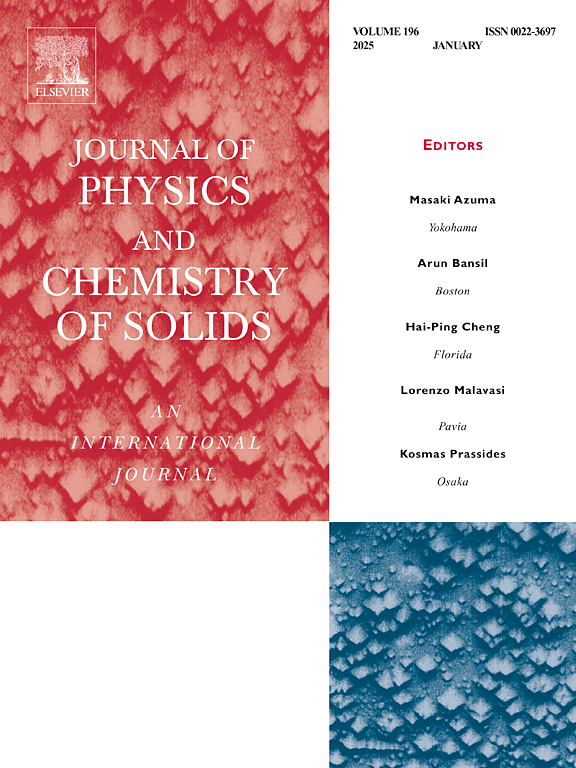Performance enhancement of CHTS-based solar cells using machine learning optimization techniques
IF 4.3
3区 材料科学
Q2 CHEMISTRY, MULTIDISCIPLINARY
引用次数: 0
Abstract
In the era of photovoltaics, metal chalcogenides exhibit promising photovoltaic performance owing to their optimal bandgap of 1 eV–1.5 eV. The current study focuses on the numerical simulation of the Cu2HgSnS4 (CHTS) based solar cell, with the initial device structure demonstrating a power conversion efficiency (PCE) of 21.16 %. Furthermore, various Machine Learning (ML) models are utilized to optimize the CHTS-based solar cell. Using ML techniques, accurate PCE predictions are made, which help simplify computation and improve the accuracy of the proposed model. Through the SCAPS-1D simulator, 729 datapoints are generated by varying the charge transport layers, absorber layer thickness (0.200 μm to 1.1 μm), defect density (1 × 1014 cm−3 to 1 × 1022 cm−3), and acceptor density (1 × 1012 cm−3 to 1 × 1020 cm−3). The boosting ML technique XGBoost is used for optimization, yielding the highest photovoltaic (PV) performance and improved accuracy. After identifying the best-suited model, the mean squared deviation and performance metrics such as MSE, R2, and CVS are calculated across 10 iterations, achieving the lowest mean squared error (MSE) of 0.036 ± 0.028 compared to other ML techniques. The optimized PV performance is obtained with VOC: 1.15 V, JSC: 33.53 mA/cm2, FF: 83.80 % and ƞ = 31.68 %, which is considered as a remarkable improvement in the PV industry. These predictions aligned closely with experimental benchmarks, validating the model's reliability for CHTS solar cell optimization. The proposed research provides new and significant insights for developing the CHTS-based solar cells.
求助全文
约1分钟内获得全文
求助全文
来源期刊
CiteScore
7.80
自引率
2.50%
发文量
605
审稿时长
40 days
期刊介绍:
The Journal of Physics and Chemistry of Solids is a well-established international medium for publication of archival research in condensed matter and materials sciences. Areas of interest broadly include experimental and theoretical research on electronic, magnetic, spectroscopic and structural properties as well as the statistical mechanics and thermodynamics of materials. The focus is on gaining physical and chemical insight into the properties and potential applications of condensed matter systems.
Within the broad scope of the journal, beyond regular contributions, the editors have identified submissions in the following areas of physics and chemistry of solids to be of special current interest to the journal:
Low-dimensional systems
Exotic states of quantum electron matter including topological phases
Energy conversion and storage
Interfaces, nanoparticles and catalysts.

 求助内容:
求助内容: 应助结果提醒方式:
应助结果提醒方式:


